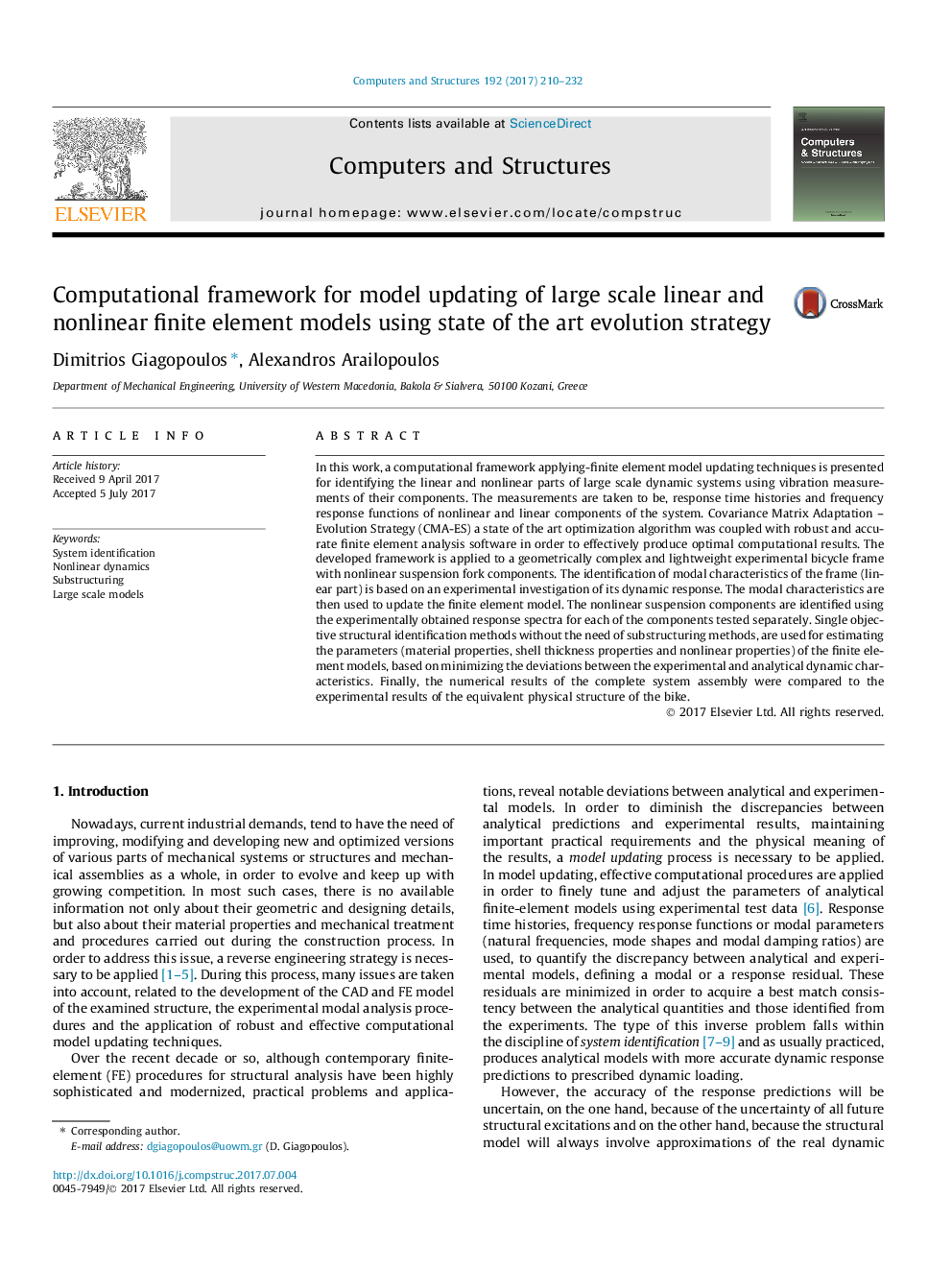| Article ID | Journal | Published Year | Pages | File Type |
|---|---|---|---|---|
| 4965620 | Computers & Structures | 2017 | 23 Pages |
Abstract
In this work, a computational framework applying-finite element model updating techniques is presented for identifying the linear and nonlinear parts of large scale dynamic systems using vibration measurements of their components. The measurements are taken to be, response time histories and frequency response functions of nonlinear and linear components of the system. Covariance Matrix Adaptation - Evolution Strategy (CMA-ES) a state of the art optimization algorithm was coupled with robust and accurate finite element analysis software in order to effectively produce optimal computational results. The developed framework is applied to a geometrically complex and lightweight experimental bicycle frame with nonlinear suspension fork components. The identification of modal characteristics of the frame (linear part) is based on an experimental investigation of its dynamic response. The modal characteristics are then used to update the finite element model. The nonlinear suspension components are identified using the experimentally obtained response spectra for each of the components tested separately. Single objective structural identification methods without the need of substructuring methods, are used for estimating the parameters (material properties, shell thickness properties and nonlinear properties) of the finite element models, based on minimizing the deviations between the experimental and analytical dynamic characteristics. Finally, the numerical results of the complete system assembly were compared to the experimental results of the equivalent physical structure of the bike.
Related Topics
Physical Sciences and Engineering
Computer Science
Computer Science Applications
Authors
Dimitrios Giagopoulos, Alexandros Arailopoulos,
